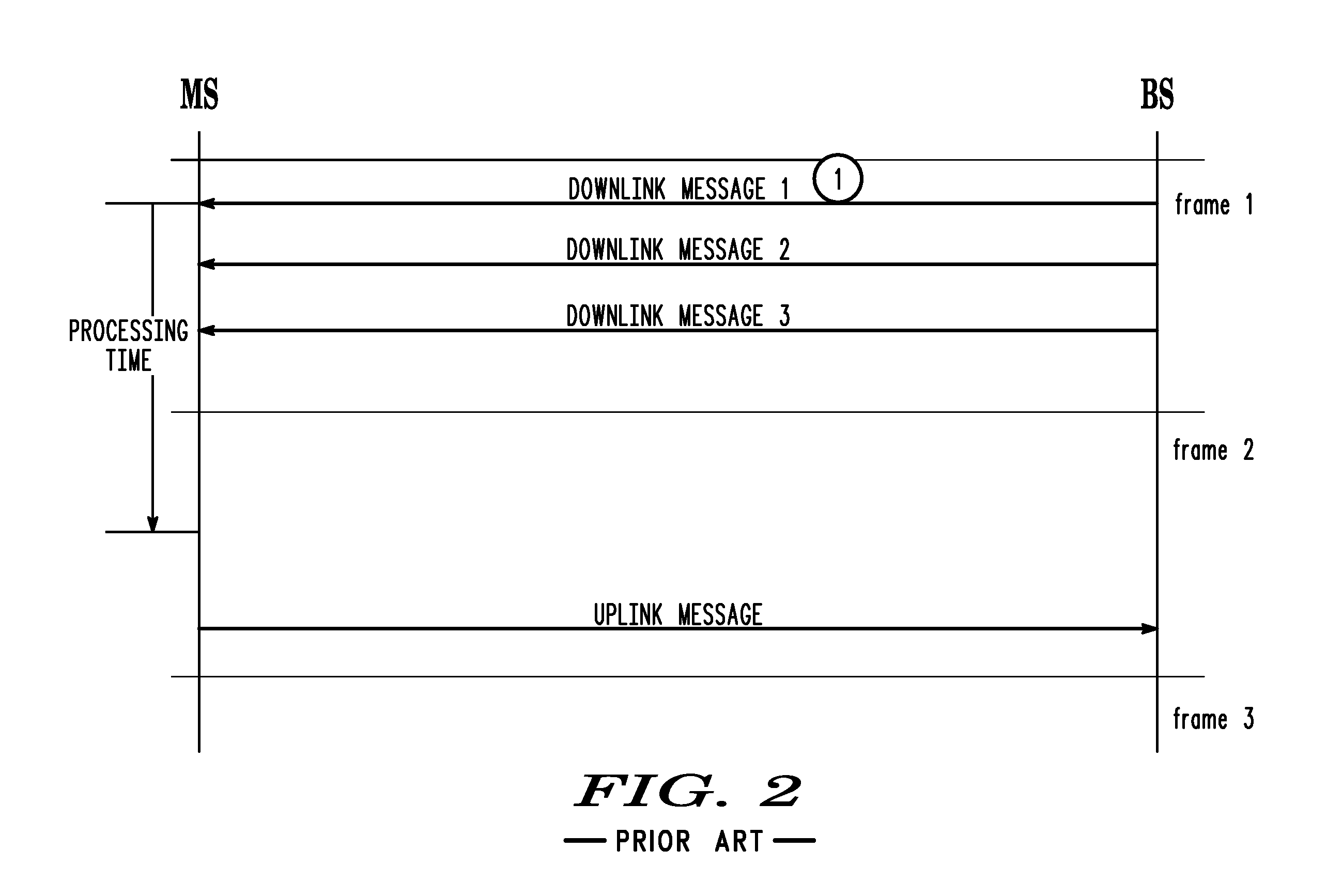Fast acquisition of a communication link in a mobile communication system
a communication link and mobile communication technology, applied in the field of mobile communication systems, can solve the problems of increased qos, communication latency, and limited frequency spectrum within each system
- Summary
- Abstract
- Description
- Claims
- Application Information
AI Technical Summary
Benefits of technology
Problems solved by technology
Method used
Image
Examples
first embodiment
[0018] In a first embodiment, the scheduler, which can be located in a Base Station (BS) as in the examples below (see FIGS. 3 and 4), or other linked network entity, is informed of the processing capabilities of a Mobile Station (MS). Using that information the scheduler can determine the earliest time that the MS will be able to respond to a message that it receives, and thus allocate uplink bandwidth for the MS at the exact time that is needed. This embodiment requires a modification in the contents of the initial network entry control messages (i.e. MAC Management Messages such as RNG_REQ, RNG_RSP), to include optional control message fields which the MS can use to indicate its processing capabilities. The scheduler is operable to receive the informing of the processing capabilities of the mobile station by reading the optional field attached to the existing control message, specifically a TLV field attached to a Media Access Control management message indicating the processing ...
second embodiment
[0019] Alternatively or additionally, in a second embodiment, the scheduler can ensure that the MS will not be disturbed while processing the downlink message, for example by making sure that there are no other messages scheduled for the MS until the expected reply time. In other words, the scheduler operates to ensure that the mobile station will not be disturbed with another scheduled message before the mobile station can respond, such that the mobile station can respond to the downlink message within the determined time. In this way, the scheduler expedites a response from the MS, by imposing “silence intervals”, during which the MS does not have to decode other messages while processing the incoming message. This can be accomplished through an optional control message flag which the MS can use to indicate to the BS if silence intervals are desired or not. Regardless of the MS's indication the BS can decide to impose silence intervals at will.
[0020] Referring to FIGS. 3 and 4, in...
PUM
 Login to View More
Login to View More Abstract
Description
Claims
Application Information
 Login to View More
Login to View More - R&D
- Intellectual Property
- Life Sciences
- Materials
- Tech Scout
- Unparalleled Data Quality
- Higher Quality Content
- 60% Fewer Hallucinations
Browse by: Latest US Patents, China's latest patents, Technical Efficacy Thesaurus, Application Domain, Technology Topic, Popular Technical Reports.
© 2025 PatSnap. All rights reserved.Legal|Privacy policy|Modern Slavery Act Transparency Statement|Sitemap|About US| Contact US: help@patsnap.com



